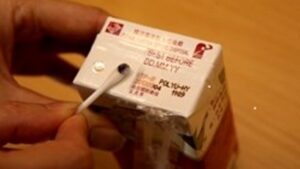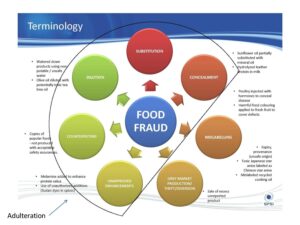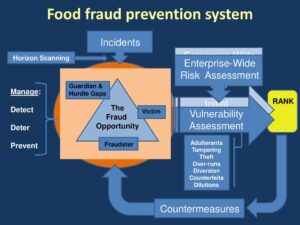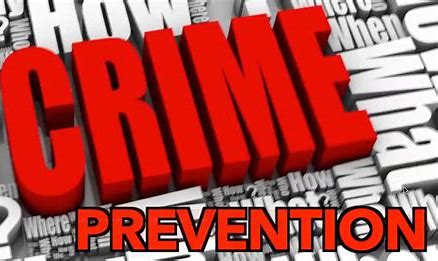INTRODUCTION
Food fraud and product tampering are serious issues that pose risks to public health, consumer safety, and industry integrity. These deceptive practices involve the intentional adulteration, misrepresentation, or contamination of food products for economic gain or malicious intent. In this comprehensive analysis, we’ll explore the complexities of food fraud and product tampering, examining their characteristics, impacts, detection methods, and prevention strategies.

1. Food Fraud: Food fraud refers to the deliberate deception of consumers by substituting, altering, or misrepresenting food products for economic gain. It encompasses a wide range of deceptive practices, including adulteration, mislabeling, dilution, and counterfeiting.
2. Characteristics of Food Fraud:
- Food fraud can occur at any stage of the food supply chain, from production and processing to distribution, retail, and consumption.
- Common targets of food fraud include high-value commodities such as olive oil, honey, seafood, spices, dairy products, and organic or specialty foods.
- Motivations for food fraud may include financial gain, market competition, supply chain vulnerabilities, consumer demand for certain attributes, and regulatory loopholes.
3. Impacts of Food Fraud:
- Food fraud poses significant risks to public health, consumer confidence, and industry reputation, undermining trust in food safety standards and regulatory oversight.
- Consumption of adulterated or contaminated food products can lead to foodborne illnesses, allergic reactions, chemical exposures, and long-term health consequences.
- Economic losses due to food fraud include financial damage to businesses, brand devaluation, market disruptions, and legal liabilities.

4. Product Tampering: Product tampering involves the intentional alteration, contamination, or sabotage of consumer products, including food, beverages, pharmaceuticals, cosmetics, and household goods. Perpetrators may tamper with products for extortion, retaliation, terrorism, or malicious intent.
5. Characteristics of Product Tampering:
- Product tampering incidents often involve the insertion of foreign objects, harmful substances, or pathogens into packaged goods, posing risks to consumer safety and public health.
- Perpetrators may target specific brands, products, or individuals, using tampering as a means of coercion, revenge, or publicity.
- Product tampering incidents can generate widespread media attention, consumer panic, and reputational damage for affected companies.
6. Impacts of Product Tampering:
- Product tampering can have severe consequences for public safety, consumer trust, and brand reputation, leading to product recalls, market withdrawals, and financial losses.
- Contaminated or tampered products may cause injuries, illnesses, or fatalities among consumers, resulting in legal liabilities, lawsuits, and regulatory sanctions for manufacturers and retailers.
- Product tampering incidents can erode consumer confidence in food safety standards, supply chain integrity, and regulatory oversight, affecting market demand and industry competitiveness.
7. Detection and Prevention Strategies:
- Implementing robust quality control measures, traceability systems, and supply chain transparency can help identify and prevent food fraud and product tampering.
- Utilizing advanced technologies, such as DNA testing, spectroscopy, blockchain, and authentication technologies, can enhance product traceability and authenticity verification.
- Enhancing collaboration between industry stakeholders, regulatory agencies, law enforcement, and consumer advocacy groups is essential for sharing information, detecting emerging threats, and coordinating response efforts.
-

The. Fraud. Opportunity. Fraudster. Victim. Guardian & Hurdle Gaps. Incidents. Countermeasures. Horizon Scanning. Manage: Detect. Deter. Prevent. Adulterants. Tampering. Theft. Over-runs. Diversion. Counterfeits. Dilutions. Enterprise-Wide. Risk Assessment. Enterprise-Wide. Risk Assessment. RANK. Initial. Screening. Vulnerability. Assessment.
8. Consumer Education and Awareness:
- Educating consumers about the risks of food fraud and product tampering, as well as how to recognize signs of tampering or adulteration, can empower individuals to make informed purchasing decisions and report suspicious incidents.
- Promoting consumer vigilance, product authentication tools, and reporting mechanisms can help identify and address instances of food fraud and product tampering in a timely manner.
In conclusion, food fraud and product tampering represent significant challenges for food safety, consumer protection, and industry integrity. Detecting and preventing these deceptive practices require collaborative efforts from industry stakeholders, regulatory agencies, law enforcement, and consumers. By implementing robust quality control measures, enhancing transparency and traceability, and fostering consumer awareness and vigilance, stakeholders can mitigate the risks posed by food fraud and product tampering and safeguard public health and safety.



